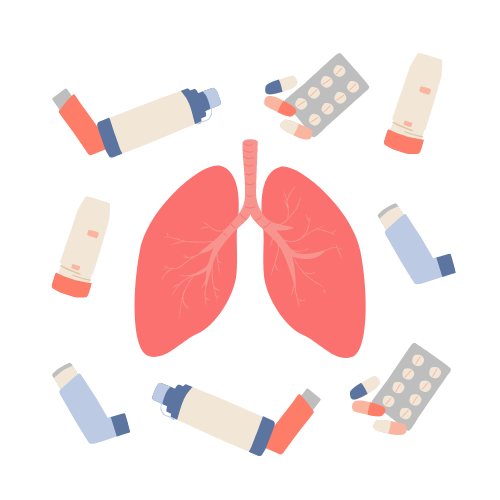
All About Asthma in Children
Share
Asthma Overview
Asthma is a common condition that affects the lungs. Asthma is due to inflammation of the airways, leading to symptoms such as coughing, wheezing, shortness of breath, and chest tightness. It is a very common condition affecting millions of children and adults worldwide.
Asthma Statistics
- Globally, over 300 million people of all ages suffer from asthma (WHO)
- In the United States, approximately 25 million people, including 6 million children, have asthma (Centers for Disease Control and Prevention).
- About 1 in 13 people in the United States have asthma (Centers for Disease Control and Prevention).
Causes of Asthma
There is no single cause of asthma, but a combination of genetic and environmental factors are believed to play a role. Children with a family history of asthma or allergies are at higher risk of developing asthma.
Asthma Triggers
There are many things that may worsen asthma symptoms or cause someone's asthma to flare. Common triggers include:
1. Allergens: Pollen, pet dander, mold, dust mites.
2. Environmental Irritants: Smoke, pollution.
3. Respiratory Infections: Viral infections can exacerbate asthma symptoms.
4. Exercise: Physical activity can trigger asthma in some children.
5. Weather Changes: Cold air or sudden weather changes.
Managing Asthma in Children
Asthma management involves a comprehensive approach to control symptoms, prevent exacerbations, and maintain optimal lung function.
1. Identify and Limit Exposure to Triggers: Try to start identifying and making a list of what make's your child's asthma worse. While some asthma triggers are unavoidable, try and limit the one's you can control such as smoke.
2. Know Your Child's Medications: Medications that help to manage asthma come in different forms such as inhalers (puffers) and tablets taken by mouth. There are different categories of medications used for asthma:
- Reliever Medications: These provide quick relief during asthma attacks.
- Controller Medications: These are usually taken every day and help to prevent asthma symptoms.
3. Create an Asthma Action Plan: Work with your child's doctor to create a plan for managing asthma, including what to do in an emergency. These are helpful summary sheets to have at home, provide to caregivers, and to keep on file at school. Download a sample Asthma Action Plan.
4. Schedule Regular Asthma Check Ins with Your Doctor: Asthma symptoms can change over time, often as children get older and also with changes in seasons. It is important to schedule regular appointments with your doctor to review current asthma control, medications, and update your child's Asthma Action Plan.
5. Use Inhalers the Right Way: There are specific instructions on how to use each type of inhaler. A good place to find instructions, is the inhaler's manufacturer website. Make sure to discuss with your doctor and/or pharmacist on the proper technique as sometimes these instructions can vary depending on the size and age of your child.
6. Spacers Make It Easier: A spacer is a device that attaches to an inhaler to help get more medicine into the lungs. Spacers are especially helpful for young children. There are many different types of spacers so the proper technique for using a spacer may vary depending on type of spacer and the age of your child. Make sure to discuss with your doctor about the type of spacer that would best suit your child and how to properly use it.
Visit our Helpful Asthma Resources page for some great websites, videos, and support pages for children with asthma.
We hope this information provides a better understanding of asthma and its management for children and their parents. Always consult with a healthcare professional for personalized advice and care.
Want to turn learning about asthma into a fun story time with your child?
Check out our children's book: Honeydew's Asthma Adventure
